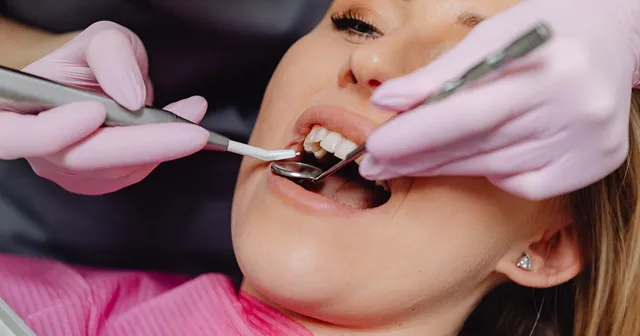How long do Teeth fillings take? Cavities, those pesky dental problems we’ve all heard about, develop when an excess of plaque, a sticky bacterial film, builds up on our teeth. This plaque harbors bacteria that feed on sugars from the foods and drinks we consume, producing harmful acids. Over time, these acids can erode our tooth enamel, creating tiny holes known as cavities. Unfortunately, cavities won’t magically heal themselves; they require the skilled hands of a dentist to fill them in. If you’ve ever wondered about the process of getting dental fillings and how long it takes, you’ve come to the right place.
Understanding the Filling Procedure
Dental fillings are a straightforward solution for dentists, and the procedure typically follows a well-defined sequence of steps. Here’s a breakdown of what you can expect:
1. Local Anesthesia
To ensure a painless experience, dentists begin by administering a local anesthetic, often lidocaine, which numbs the mouth area requiring treatment. While this might cause a temporary stinging sensation when injected into the gum tissue, it is essential for your comfort during the procedure.
2. Removing Decay
Once the numbing effect takes hold, the dentist proceeds to remove the decayed portion of the tooth using a dental drill or laser. This step is crucial in eliminating the source of the cavity.
3. Preparing the Tooth
With the decay removed, the dentist prepares the tooth for the filling. This involves shaping the area and, in some cases, etching the tooth with an acid gel, depending on the type of filling to be used.
4. Applying the Filling Material
After the tooth is prepped, the dentist applies the chosen filling material. Some fillings require special light exposure to harden properly. If you’re receiving such a filling, your dentist will periodically shine a bright light on it during the procedure.
5. Polishing the Filling
To ensure a smooth finish and prevent sharp edges that could cause discomfort to your tongue or cheeks, the dentist finishes by polishing the filling.
How Long Do Teeth Fillings Take?
One of the most common concerns people have about dental fillings is how much time the procedure will consume. Fortunately, this is generally a quick process. Here’s what you can expect in terms of time:
A standard dental filling procedure typically takes about an hour to complete. However, if you have multiple cavities requiring attention, your dentist might schedule them over multiple visits to ensure thorough treatment and comfort.
Post-Filling Care
Once the dental filling is in place, it’s essential to take some post-procedure precautions:
1. Tooth Sensitivity
It’s quite normal to experience some soreness or tooth sensitivity after getting a filling. This discomfort can persist for several hours or even days after the procedure. To alleviate this, avoid consuming very hot or cold drinks, sugary foods, and soft drinks during this time. If the sensitivity persists or worsens, it’s advisable to consult your dentist promptly.
2. Setting Time
Certain types of fillings require a bit more time to set and harden fully. During this initial period, sticky or hard foods can dislodge the filling. To prevent any issues, consult your dentist regarding how long you should wait before resuming your regular diet to ensure you don’t inadvertently damage your filling.
3. Sharp Edges
Even after the dentist polishes the filling, some sharp edges may remain. You might not notice them initially due to the lingering effects of the anaesthesia, but they can become a source of discomfort once the numbness subsides. If you find that your new filling feels sharp or bothersome, don’t hesitate to inform your dentist. They can swiftly address this concern to ensure your comfort.
Conclusion: How Long Do Teeth Fillings Take?
In conclusion, the process of getting dental fillings is a relatively straightforward and efficient procedure that takes about an hour for a single cavity. It involves local anesthesia, removal of decay, tooth preparation, filling application, and final polishing. While some post-filling discomfort is normal, following your dentist’s advice and taking proper care can help ensure a smooth and pain-free experience. Remember that dental fillings are essential for treating cavities and preventing further dental problems, so don’t hesitate to seek prompt treatment when needed. By understanding the process and being proactive in oral care, you can maintain a healthy and happy smile for years.




